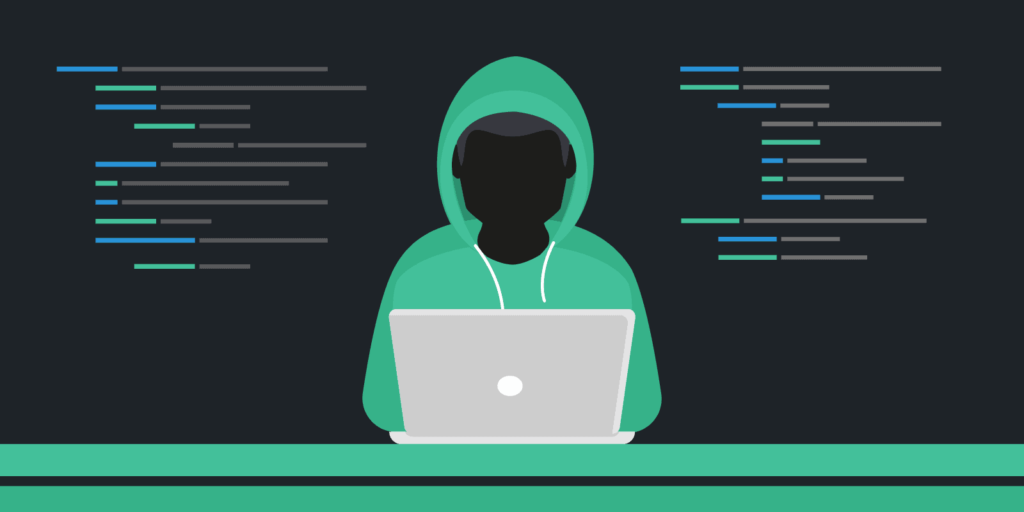
In the ever-evolving landscape of the digital age, the term “hacking” has become ubiquitous, often associated with both malevolent and benevolent activities. From Hollywood portrayals to real-world incidents, hacking has found its way into mainstream consciousness. But what exactly is hacking, and how does it manifest in the digital realm?
At its core, hacking refers to the process of gaining unauthorized access to computer systems or networks, manipulating them, and often bypassing security measures. However, it’s crucial to note that hacking isn’t inherently malicious. The term encompasses a wide range of activities, including ethical hacking, which involves professionals testing systems for vulnerabilities to strengthen cybersecurity.
Types of Hacking
- Black Hat Hacking
Black hat hackers are the stereotypical “bad actors” in the hacking world. Their primary goal is to exploit vulnerabilities for personal gain, whether financial or otherwise. Cybercriminals engaging in activities such as identity theft, financial fraud, and spreading malware fall into this category.
- White Hat Hacking
On the opposite end of the spectrum are white hat hackers, also known as ethical hackers. These individuals use their skills to identify and fix vulnerabilities in systems, helping organizations enhance their cybersecurity. White hat hacking is often employed as a preventive measure to safeguard against potential malicious attacks.
- Grey Hat Hacking
Grey hat hackers operate in a morally ambiguous space. They may breach systems without explicit authorization, intending to expose vulnerabilities. However, their actions may not always align with legal or ethical standards, blurring the lines between black hat and white hat hacking.
- Hacktivism
Hacktivism involves hacking for a political or social cause. Hacktivists may target websites, networks, or databases to advance their ideological agendas. The motivations behind hacktivism can vary widely, ranging from advocating for free speech to opposing government policies.
Methods of Hacking
- Phishing involves tricking individuals into divulging sensitive information, such as passwords or credit card details. This is often done through deceptive emails, messages, or websites designed to appear legitimate.
- Malicious software, or malware, is a common tool employed by hackers. This includes viruses, ransomware, and Trojans, which can infiltrate systems and compromise data.
- Brute force attacks involve systematically trying every possible combination of passwords until the correct one is found. This method is time-consuming but can be effective if security measures are weak.
- Social engineering exploits human psychology to manipulate individuals into divulging confidential information or performing actions that may compromise security. This can include impersonation, pretexting, or baiting.
Common Reasons for Hacking
- Hacking is often driven by the desire to steal personal data such as social media logins, bank details, or private photos. Cybercriminals may use this information for identity theft, revenge porn, or doxing, distributing an individual’s details online.
- Hacking can be motivated by a desire for revenge, leading individuals to compromise personal data with the intention of causing embarrassment or fear.
- Cybercriminals may exploit information obtained through hacking for extortion or blackmail, coercing victims into activities like providing money or sharing compromising images (sextortion).
Businesses and organizations are not immune to the perils of hacking, facing threats such as financial gain, unauthorized access to personal data, and reputational damage. Cybercriminals may cripple a company’s computer systems and demand ransom, leading to significant financial losses, legal repercussions, and damage to public confidence.
Methods Employed by Hackers
- Hackers may employ educated guesses or brute force attacks to crack passwords, gaining access to computers or social media accounts.
- Installation of programs or viruses like Trojan horses allows hackers to search for unprotected entrances into computer systems, exploiting vulnerabilities.
- Programs installed by hackers can record every keystroke made by a user, providing access to computer systems and potentially facilitating identity theft.
- Hackers utilize networks of compromised computers (zombie computers) to establish remote access and control over victims’ systems through seemingly authentic emails.
Hacking, with its dual nature of threat and defense, underscores the importance of cybersecurity in our interconnected world. By understanding the motivations, methods, and protective measures against hacking, individuals and organizations can navigate the digital landscape with greater resilience and safeguard against potential cyber threats.

